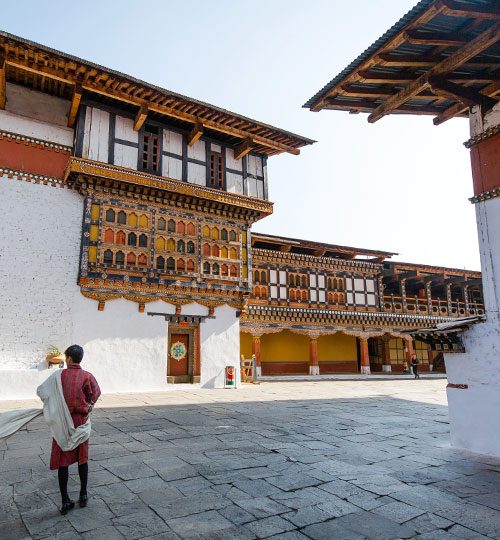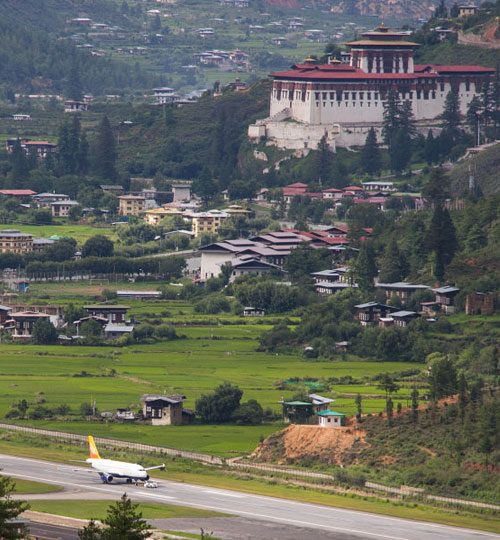Paro
paro
Paro – At the western side of the capital lies the tiny hamlet called Paro. Cut off from the hustle and bustle of city life this small town provides a lifetime experience to nature lovers and also to those who are deeply engrossed with history and spirituality. The only airport in the country is situated here. It is a small town with some very important historical structures and holy monasteries.
The airport town
Paro
Interdum exercitation penatibus, praesentium facilisi accusamus fermentum, sagittis.




Things to See in Paro
Paro Dzong – A classic example of Bhutan’s enriched architecture. The original name of this is Rinchen Pong Dzong. It was affected by a massive fire in the year 1907, the Dzong retained its old charm and attracted tourists from different walks of life. The construction of this Dzong was initiated by Zhabdrung Ngawang Namgyal in the year 1644. The Dzong has got some precious murals. Both the interior and exterior reflect the architectural genius of the monument. It works both as a monastery and it also houses the district GOVT offices.
Taktshang Lhakhang ( Tigers Nest ) – A lot of people around the world recognize Bhutan with the help of the picture of this extraordinary Monastery. This incredible structure is perched on the side of a rocky cliff 3000 feet above the Paro Valley. It is believed that the guru Rinpoche reached this place on the back of a tigress. Apart from its breathtaking view, it is been considered one of the holiest places in Bhutan.
Ta Zong or the National Museum – Originally a watch tower it has now become the National Museum of Bhutan. It offers in-depth knowledge about the history, culture, and traditions of Bhutan.
Drugyel Dzong – A massive fire damaged the site in 1951. It is not been restored and the ruins stand here. But it has immense historical significance as well as a stunning natural view. It was originally built in 1649 to commemorate Bhutan’s victory over the invasions from Tibet which always disturbed the stability of the country. The Dzong means victorious fortress.
Dungtse Lhakhang – The temple was built in the early 15th century and comprises a few superb Buddhist paintings. According to the local mythology, this Chorten-looking temple was built on the head of a demoness who cussed illness to the local people.
Kyichu Lhakhang – One of the oldest and holiest shrines of the country. The temple complex has two temples. The old one was built in the 7th century thus adding huge historical importance to this place.
Traditional farmhouses – Built in the almost same pattern these reflect the lifestyle of the local farmers. These well-decorated houses are a must-visit in the valley.
